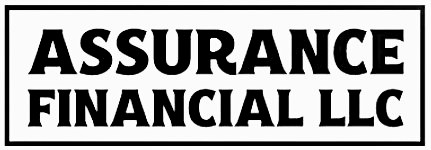Fashion businesses regularly face design challenges when creating new garments. This can involve highly innovative designs and even innovative manufacturing processes.
Fashion designers have aesthetic design challenges, like determining the right fabric properties for the design, solving construction problems like proper draping and fit, addressing fabric shrinkage and colorfastness issues, ensuring proper thread selection and seam strength, and adapting standard patterns for different body types.
They also have functional design requirements which often include conducting testing to ensure garments perform as intended in real-world conditions, providing adequate range of motion for various physical activities, and maintaining structural integrity and durability across multiple wearings and washings. Garment functionality encompasses aspects like proper closure mechanisms that stay secure, breathability appropriate for intended use conditions, and ensuring wearability across the full intended size range without compromising safety or comfort.
Given these and other design elements, where is the line between creative development and qualified research for purposes of the research tax credit? In the recently decided case of Max v. Commissioner, T.C. Memo. 2021-37, the court examined whether clothing design activities could qualify for the research tax credit under Section 41. This case offers an opportunity to consider when creative development could cross into qualified research territory for tax purposes.
Facts & Procedural History
Leon Max founded his fashion business after emigrating from the Soviet Union in the 1970s. Starting with a small line featuring jumpsuits made from typewriter ribbon poplin, his company, grew into a major women’s clothing business.
By 2011 and 2012, LMI was producing up to one million garments monthly across various clothing lines sold in department stores nationwide, including its high-end Leon Max brand and lines specifically designed for retailers like Macy’s, Dillard’s, and Belk.
LMI implemented a structured development process for each garment that included conceptual planning, design sketching, pattern creation, sample making, fit testing, and quality assurance. The company tailored its clothing lines to different customer profiles, with considerations for regional preferences, seasonal factors, and style trends.
In 2013, LMI engaged a tax consulting firm to analyze whether its activities qualified for research tax credits. Based on this analysis, Max claimed research credits of $426,255 for 2011 and $322,700 for 2012 on his individual tax returns, reflecting the pass-through from LMI.
On audit, the IRS disallowed these credits in a notice of deficiency issued in June 2016. Max filed a petition with the U.S. Tax Court challenging this determination.
About Section 41 Research Credits
Section 41 of the tax code allows companies to claim a credit for increasing research activities. This credit equals 20% of the excess of qualified research expenses over a base amount. The base amount is the same expenses from prior periods. So the computation compares the current qualified spending to the prior years qualified spending. This is the expense side of the calculation.
There is also the qualified activity side of the qualifications. To qualify as research eligible for the credit, the research activities must satisfy four tests. The Section 174 test requires expenses to be eligible for treatment as research expenditures, meaning they must be intended to discover information that eliminates uncertainty about developing or improving a product. The technological information test requires that the research be technological in nature, fundamentally relying on principles of physical or biological sciences, engineering, or computer science. The business component test requires that research be undertaken to develop a new or improved business component of the taxpayer. Finally, the process of experimentation test requires that substantially all research activities constitute elements of a process of experimentation for a qualified purpose, using a systematic approach similar to the scientific method rather than simple trial and error. We’ll get into these tests more below.
The Section 174 Test and Fashion’s “Uncertainties”
The Section 174 test requires expenses to be eligible for treatment as research expenditures. This means that they must be intended to discover information that eliminates uncertainty about developing or improving a product.
The court found that LMI’s design activities—like determining thread sizes, aligning fabric patterns, and creating plus-size garments—weren’t true “uncertainties” under the tax code. LMI’s employees already possessed the knowledge to address these challenges as part of their routine work. For uncertainty to exist, the court explained, the taxpayer must be genuinely uncertain about achieving objectives through research, not just uncertain about which design choices will look best.
Further undermining LMI’s claim was the court’s determination that these activities weren’t “investigative in nature.” The court noted that Section 174 limits deductions to expenditures used to develop concepts, not for actual product construction. LMI’s approach to solving design problems represented common solutions to common challenges rather than systematic inquiry.
Technological Nature and Process of Experimentation Requirements
The tax court combined its analysis of the technological information test and process of experimentation test, as both relate to scientific methodology. The technological information test requires research to be fundamentally rooted in physical or biological sciences, engineering, or computer science.
The court rejected LMI’s argument that its activities relied on material science and textile engineering. While fashion design requires knowledge of how fabrics drape and behave, the court found LMI’s employees weren’t implementing scientific principles in their work. The court distinguished between true engineering—which applies science to harness properties of matter and energy—and activities like fit testing, which simply involves observing how garments look and function on a model.
The process of experimentation test requires “substantially all” research activities to constitute elements of a systematic approach similar to the scientific method. The court found that LMI’s nine-step design process, while thorough, didn’t constitute scientific experimentation. Rather than using a formalized scientific method to test hypotheses and analyze data, LMI’s process represented a creative development workflow typical in the fashion industry.
Why Fashion Design Generally Falls Short of Research Credit Requirements
The Max case highlights several reasons why fashion design typically fails to qualify for research credits.
First, fashion design is inherently driven by style, taste, and aesthetic considerations—factors specifically excluded from qualified purposes under Section 41. Even functional aspects are often intertwined with aesthetic goals. The court observed that “most clothing design is inherently style driven… If the function of pants was the predominant concern, there would be very little need to design them.”
Second, the uncertainty in fashion design differs fundamentally from technological uncertainty. When creating garments, LMI knew it could achieve its objectives; the question was which design choices would best realize the creative vision—not whether the goal was technically feasible. Unlike technological research, fashion designers generally work with established techniques and materials to address creative challenges, not scientific uncertainties.
Third, many testing procedures in fashion—such as shrinkage tests and colorfastness tests—are quality control measures rather than experimental research. These standardized tests followed industry guidelines to ensure textiles met established parameters, not to discover new information. Quality control testing is specifically excluded from qualifying for research credits.
Finally, the court noted that LMI failed to establish that “substantially all” (at least 80%) of its design activities constituted a process of experimentation. Many activities were driven by aesthetic considerations or represented standard industry practices rather than technological research.
The Takeaway
This case shows that fashion design processes, despite its complexity and creativity, typically does not qualify for research tax credits. The activities in clothing design generally don’t address scientific uncertainties through experimentation, but rather solve creative challenges through skilled application of established techniques. For fashion businesses, this means understanding that the Section 41 research credit targets technological innovation rather than creative development. While other tax benefits may apply to fashion businesses, claiming research credits for standard design activities is unlikely to succeed under current law and regulations.


